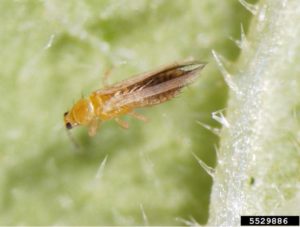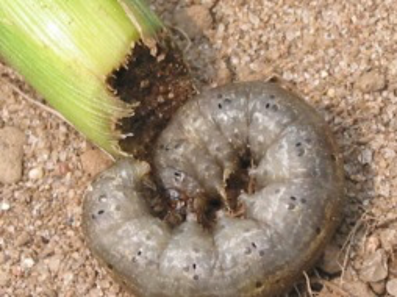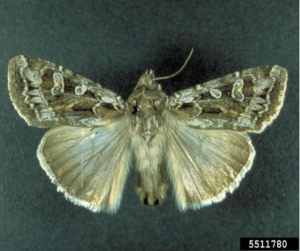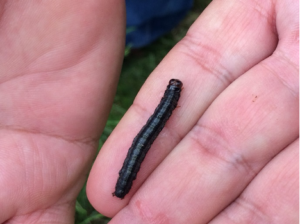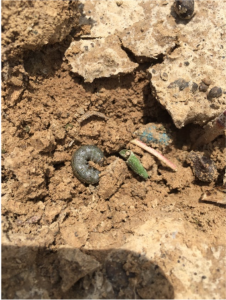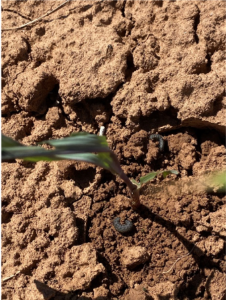
Adult thrips. Dr. David Kerns, Professor, IPM Coordinator and Extension Specialist, Texas A&M AgriLife Extension, College Station
Most recently reviewed by: Suhas Vyavhare & Pat Porter (2020)
Common Name(s): Thrips
Description
Thrips are slender, cigar-shaped, straw-colored insects about 1/15-inch-long as an adult. They have piercing and sucking, cone-shaped mouthparts. Adults have narrow wings fringed with hairs and can drift long distances in the wind. Due to their small size, thrips are often difficult to see.
Habitat & Hosts
Onion thrips have an extremely wide host range. They feed and can reproduce on several cultivated crops including onion, cotton, beans, fruits, vegetables, and practically all small grains. Citrus thrips feed on leaves and fruit of most all species of citrus tree plants. Greenhouse thrips feed on a wide range of horticulture plants. Gladiolus thrips feed on gladiolus and other species of flowers. Western flower thrips feed on a wide variety of plants including chrysanthemums, gloxinia, impatiens, tomato, cotton, vegetables, and grasses. Some plants species, varieties and cultivars are more attractive to the thrips than others.
Life Cycle
In the thrips life cycle, egg-to-adult development takes about 16 days. Eggs inserted into the plant tissue by the female’s sharp egg-laying tube (ovipositor) hatch in about 6 days. Two larval stages require about 6 days for completion; then, the prepupal and pupal stages take an additional 4 days and generally occur in the soil. The average life span of a mated female is about 35 days, and each female can produce fifty or more eggs. Thrips can reproduce without mating. Mated females produce both males and females; unmated females produce only males.
- Western flower thrips, Frankliniella occidentalis. Image by David Cappaert, Bugwood.org
- Flower thrips, Frankliniella sp.. Image by Bruce Watt, University of Maine, Bugwood.org.
Management
If you live in the State of Texas, contact your local county agent or entomologist for management information. If you live outside of Texas, contact your local extension for management options.Thrips management needs and strategies vary across commodities. Avoid planting cotton during cool conditions so that young plants will not be affected when plants are most susceptible to thrips damage. Not planting cotton near small grains and onions or adjusting planting date helps alleviate thrips migration into the field. Chemical control is an effective way of managing thrips. Chemical control options include insecticide application (foliar/in-furrow) and/or seed treatments.
Related Publications
http://lubbock.tamu.edu/files/2017/05/Thrips_ENTO-069.pdf
Citations
Suhas Vyavhare, Assistant Professor and Extension Specialist David Kerns, Professor, IPM Coordinator and Extension Specialist. ENTO-069. 2017. Thrips. Texas A&M AgriLife Extension.

